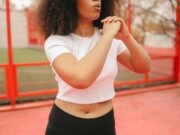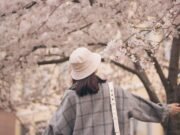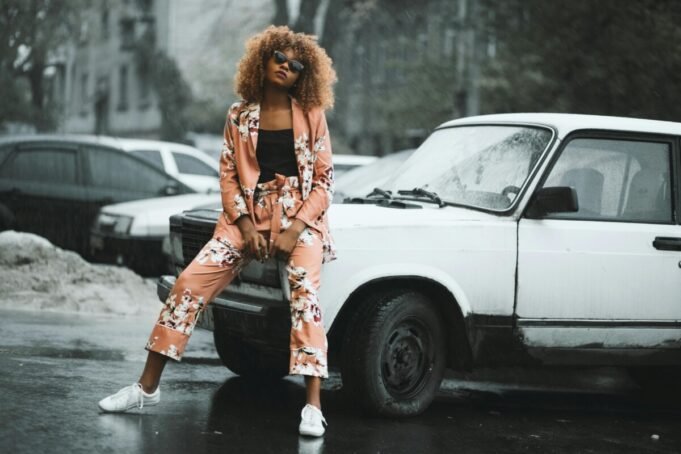Fashion has long been a powerful tool for self-expression and identity, perhaps nowhere more so than in urban communities. The bustling streets of cities worldwide give rise to cutting-edge trends that capture the zeitgeist and vibrancy of urban culture. These groundbreaking street style fashions then gradually influence mainstream tastes, eventually making their way onto high fashion runways. This cyclical interplay between streets and runways reveals how fashion can be an impactful urban expression that both shapes and reflects our societies.
Street Style Fashion: The Birthplace of Urban Trends
Street style fashion refers to the clothing and accessories worn by individuals on city streets. It encapsulates the creative styling of everyday urbanites, from Harajuku girls in Tokyo to hip hop heads in the South Bronx. Street style often originates from grassroots youth subcultures and communities aiming to challenge societal norms through fashion.
Notable street style icons like punk pioneer Vivien Westwood, hip hop legend Grandmaster Flash, and Japanese Lolita fashion founder Mana have paved the way for bold new fashions. These influencers help bring underground trends into the mainstream by leading and inspiring their respective subcultures. Their distinctive personal styles, which rebel against convention, end up spreading organically and creating widespread trends.
Music-based subcultures like punk, hip hop, and goth have had an especially noticeable impact on urban street fashion. The anti-establishment punk movement brought ripped clothes, leather jackets, and provocative slogans into the public eye. Similarly, b-boy culture popularized oversized hoodies, tracksuits, and sneakers that are now streetwear staples. Beyond music, political and social justice movements also influence urban fashion, seen in feminist, LGBTQ+, and Black Pride empowerment slogans printed on t-shirts and accessories.
From hoodies and sneakers to punk leather jackets, many enduring street style garments have become wardrobe essentials. Now, brands like Supreme and Stussy have also monetized some street fashion trends. But the heart of street style remains with brave urban mavericks pushing boundaries through their fashion choices. Their experimentation gives rise to the raw creative energy that pulses through cities worldwide.
Runway Fashion: The Evolution of Urban Trends
The innovations of street style fashion go on to heavily influence designers. By incorporating urban influences into their high-end collections, they effectively translate raw street fashion into more refined looks.
Take Vivienne Westwood, who evolved from designing punk street styles to high fashion gowns fit for royalty. She brought elements like tartan and safety pins from the streets to the runway. Similarly, hip hop inspired Tommy Hilfiger and Dapper Dan to create luxury urban wear in the 1980s and 90s. This phenomenon continues today, with designers like Virgil Abloh bringing streetwear staples like hoodies and sneakers onto the catwalks.
Runway shows also accelerate fleeting street style fads into widespread trends. For instance, normcore – the deliberately plain, average style of dressing – emerged from trendy New York streets before appearing in high fashion collections. Luxury designers have helped propel normcore into a major fashion movement embraced by mainstream retailers worldwide.
The visibility of runway fashion turns obscure urban trends into pop culture moments. Rapper Lil Kim’s bold purple pastie look at the 1999 VMAs, for instance, echoed the daring street styles of her native Brooklyn. When high-end designers like Alexander Wang replicated the look, it cemented the avant-garde “pasties as fashion” trend. The interplay between streets, music culture, and runways can thus rapidly popularize new styles.
Ultimately, designers creatively transform raw, fringe street fashion into refined high-end looks. By doing so, they allow urban self-expression to influence mainstream tastes and reach vast new audiences.
Urban Fashion Trends: A Melting Pot of Cultures and Styles
Cities like New York, Paris, and Tokyo have distinctive street style cultures that influence their fashion weeks. But urban fashion trends today reflect much more than just Western capitals. The digital age has created a melting pot of styles from cities worldwide.
For instance, the Nairobi fashion scene blends nomadic Samburu beadwork with hip hop streetwear, creating a new Afrofuturistic aesthetic. Seoul’s street style stars on social media have propelled Korean beauty and fashion across the globe. Mumbai’s wedding fashion industry modernizes traditional silhouettes like saris and lenghas into new fusion wear. These groundbreaking looks from global metropoles expand the boundaries of urban fashion.
Street style cultures also increasingly borrow elements from each other, facilitated by the internet. For example, Harajuku fashion has been a source of inspiration for avant-garde designers in Antwerp and Paris. The trendy color blocking style of South African township youth has also impacted international streetwear. This cross-pollination between global cities reinforces how urban fashion defies geographic boundaries.
Moreover, sustainable and ethical fashion movements have taken root as a priority for youth in cities like Copenhagen and Vancouver. Trendy thrifting and upcycling have brought environmental consciousness to urban communities. Eco-minded streetwear brands like Patagonia and Rothy’s are gaining cult followings worldwide thanks to their green production practices. Consumers today demand that urban fashion reflects not just style, but values.
In these ways, urban fashion trends have become a melting pot that integrates cultures, sustainability, and digital connectivity. Street style communities worldwide are linked by sharing ideas that reshape fashion globally.
City Chic Style: The Epitome of Urban Fashion
The diverse influences of urban street fashion ultimately produce a distinctive “city chic” style. City chic describes fashion that effortlessly blends high-end and streetwear elements into the quintessential urban aesthetic.
Minimalist silhouettes and neutral palettes form the base for many city chic looks. Statement outerwear like leather jackets, faux furs, or trench coats add an edgy touch. Sneakers from cult brands like Converse or Vans replace heels for all-day wearability. Accessories like oversized sunglasses, sleek backpacks, and beanies give off laid-back urban cool.
City chic style also prioritizes versatility and functionality. Key pieces like blazers, jeans, and midi skirts pair well together for mix-and-match potential. Fabrics like denim, jersey, and merino wool suit the active urban lifestyle. Garments fall in the sweet spot between dressy and casual for seamless day-to-night transitions.
Ultimately, city chic fashion allows you to effortlessly curate looks that are stylish yet understated. The aesthetic works well for urban professionals, creatives, students, and anyone who moves through the kinetic city streets. By blending urban edginess with sophistication, city chic empowers you to confidently express your personal style.
Conclusion
Fashion’s journey from gritty streets to posh runways reveals an important cycle of creativity and expression. Urban trendsetters use fashion as a tool for influence and rebellion on a grassroots level. Designers then pick up these subcultural styles and bring them into the mainstream. The interplay between streets and runways drives the ever-evolving landscape of urban fashion.
Looking ahead, we can expect even more blending of cultures and styles from across the globe. Sustainability and ethics will also become increasingly central to urban communities and fashion. But the streets will continue pulsating with creative energy and inspiring self-expression. Fashion will always be an impactful urban artform that both influences and reflects the diversity of cities worldwide.




































